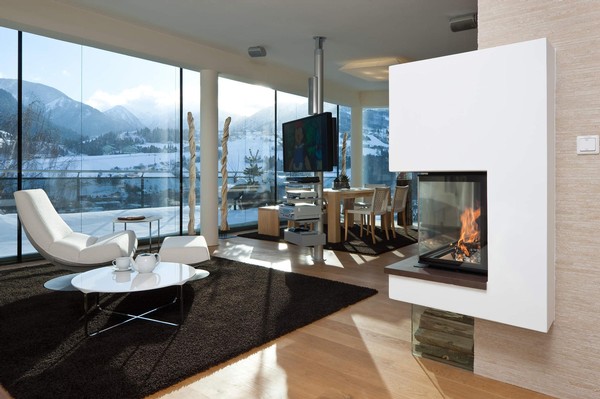January 2017
The opinions of individual experts are always circulating in the media: fine dust is fundamentally extremely harmful and is, above all, a problem in wood-fired systems. This generalisation is not only wrong, but also makes the inaccuracies into a scapegoat. To explain.

That fine dust is a result of wood-fired systems is undisputed. The question is, how high are the emissions – and how can they be reduced. A question which is also being investigated with relation to road traffic and industry.
Prerequisites for low-dust wood-fired systems
In wood-fired systems, there are two important prerequisites for low-dust heating with wood. Firstly: the correct operation of the systems; secondly: the technical condition of the systems. Anyone, for example, who takes wet, too thick wood and burns is incorrectly pollutes the air and thus their own basis for life. Targeted combustion air systems and correctly sized combustion chambers play a significant role in the technology – a matter of course in modern fireplaces. Systems with old technology and incorrect sizing harm the environment, however, as a result of incomplete combustion processes.
Correct operation and modern systems allow for the low-emission operation of wood-fired systems, many times lower than for old systems or open fires, for example.
The numbers speak for themselves
Fires in gardens and in the forest result in massive dust emissions. Values of 6000 mg of dust per cubic metre of exhaust air are possible offhand. In systems with old technology and incorrectly operated systems, 4000 mg of dust per cubic metre of exhaust air can quickly escape from the fireplace, while for modern, correctly operated systems the figure can be significantly less than 100 mg of dust per cubic metre of exhaust air. Sweepingly attributing the problem of fine dust pollution to wood-fired system thus falls short.
Compulsory remediation for old systems
There are two things which we can and must do in order to solve the problem of fine dust from wood-fired systems: First, the circumstances for the replacement of old, technologically inadequate systems should be created. Here, politics and the enforcement authorities are needed for the establishment of compulsory remediation for old systems and for its consistent implementation. Incentives and penalties could accelerate the process of the quick replacement of asset investments. Secondly, the owners of wood-fired heating systems should be instructed in how to operate their systems correctly. Heating manufacturers, fireplace builders and chimney sweeps are needed above all here. They need to make good operating manuals and information material with practical tips and instructions about proper heating with wood available.
We are part of the solution
In Switzerland, there are more than 400,000 (!) wood-fired systems with old technology. Sadly, the stock is hardly ever replaced and, alongside fires in the open air, is the main source of fine dust pollution from wood burning. However, there have been no significant efforts by politicians to change this situation – even though this would be possible through a scheme for the compulsory remediation of old systems. The wood energy sector has long demanded that its proposed solutions are taken seriously. The most important of them is: “Modern, properly operated wood-fired systems are not the cause of the fine dust problem, but its solution!”
The benefits predominate
Modern wood-fired heating systems with low fine dust emissions have many more benefits which, to date, have not come up for discussion: Environmental-friendliness thanks to CO2 neutrality, demonstrably healthy heat radiation, renewability of wood and, of course, its very high regional and local creation of value.